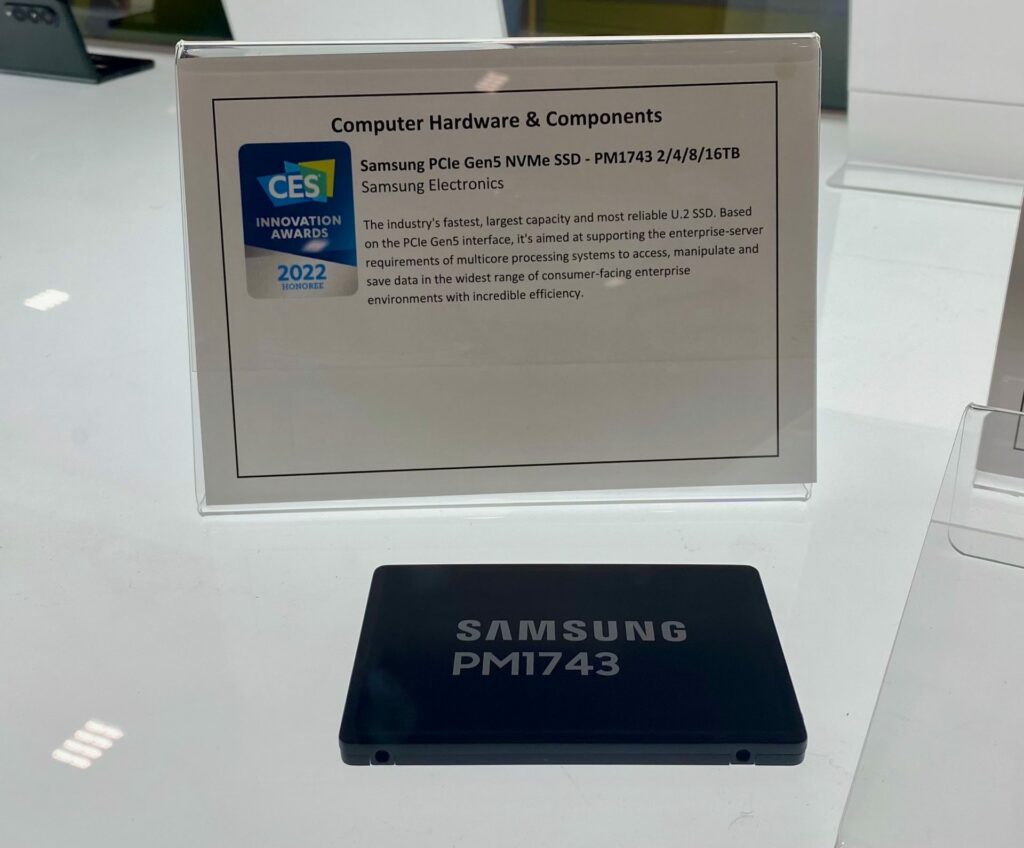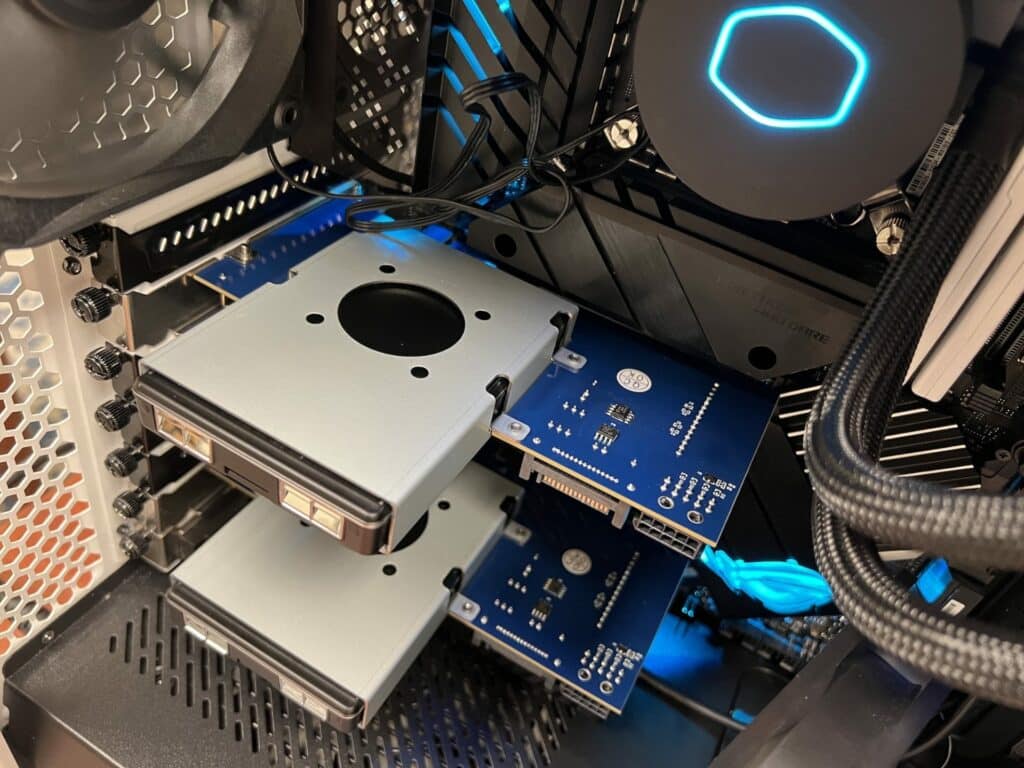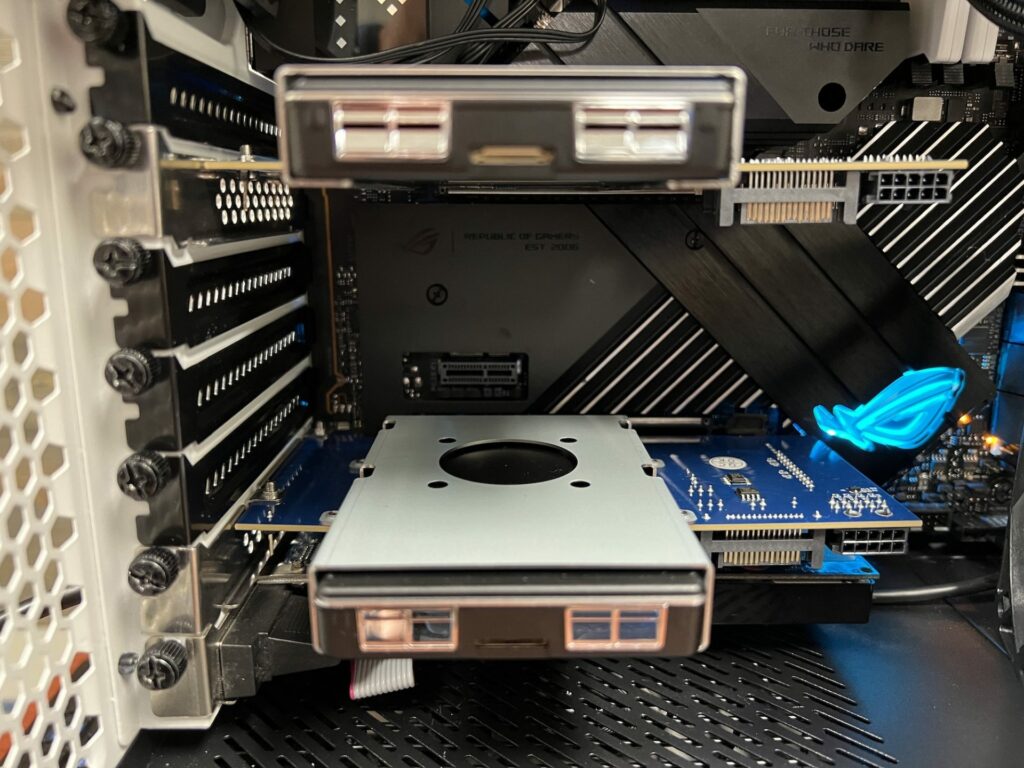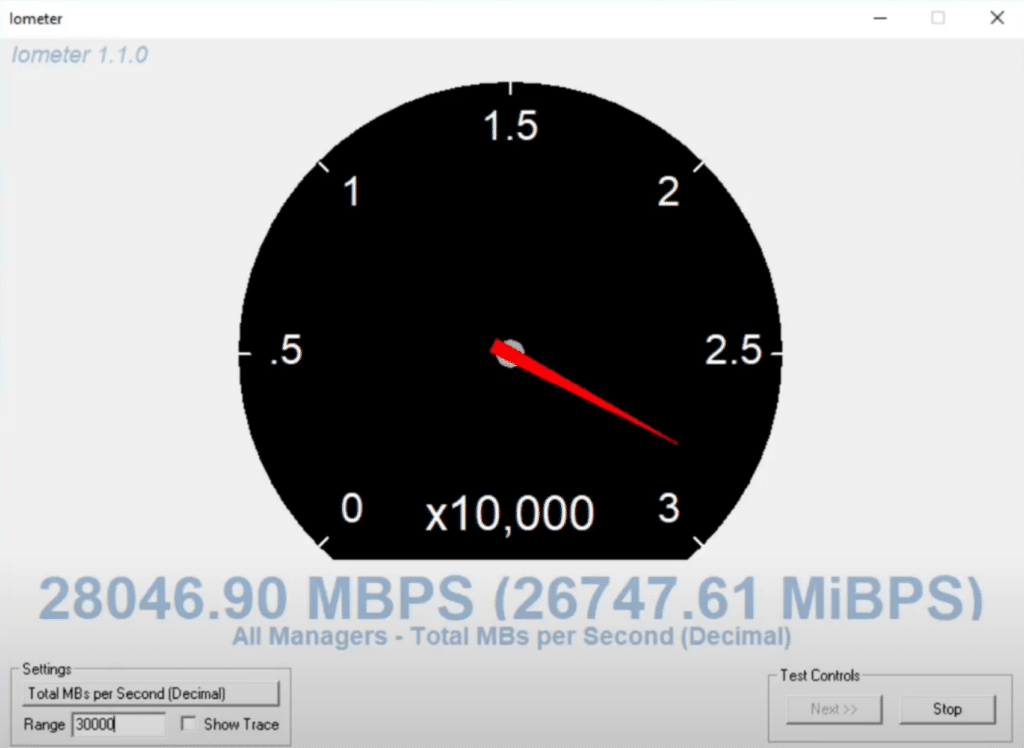The Samsung PM1743 SSD is their first enterprise SSD featuring the new PCIe 5.0 (Gen5) interface, combining the company’s advanced sixth-generation V-NAND and a proprietary controller. Showcased at CES 2022, the new PCIe Gen5 interface offers a bandwidth of 32 gigatransfers per second (GT/s), doubling what we saw with PCIe Gen4 and making it a significant step up in performance.

Samsung quotes their new Gen5 SSD with sequential reads speeds of up to 13GB/s, while random read speeds are expected to reach upwards of a massive 2.5 million IOPS. Write speeds are also projected to reach significantly improved numbers, with sequential and random speeds quoted at 6.6GB/s and 250,000 IOPS, respectively. This equates to roughly 1.9x and 1.7x faster speeds over the company’s previous PCIe 4.0-based products (i.e., the previous generation PM1733).
Not only is the performance profile significantly improved, but the new Gen5 interface also allows Samsung to boost its power efficiency. For example, the new PM1743 SSD produces just 608MB/s per watt, which is approximately 30% less power than their previous Gen4 drives. This more effective and efficient power consumption has the potential to noticeably lower server and data center operating costs and reduces carbon footprint, especially in larger deployment use cases.
Samsung PM1743 Form Factors and Sever-Level Features
The PM1743 SSD will be available in capacities of 1.92TB to 15.36TB and in both the standard 2.5-inch size and growlingly popular 3-inch EDSFF (E3.S). Now that Gen5 is almost here, you will see more and more enterprises and technology supporting the ruler form factor, especially since it is capable of doubling storage density in systems compared to the traditional 2.5-inch configurations.
It is also expected that the PM1743 will be the first PCIe Gen5 SSD with dual-port support. This is hugely important, as it will help promote consistent operation and high availability of servers and storage arrays in the event of a failure between one of the port connections.
For security, the new Samsung Gen5 drive will feature an embedded security processor and Root of Trust (RoT). This will help will protect against malicious threats and data forgery, and will enable Secure Boot in server systems via attestation.
Testing the Samung PM1743 SSD
During its development, Samsung collaborated with Intel to optimize the PM1743, so we were excited when Intel dropped by the StorageReview lab with their test system to demonstrate what this new Gen5 drive can do.

The rig they brought was comprised of the ROG MAXIMUS Z690 APEX motherboard, which is equipped with five M.2 slots (including Gen4 and Gen5 slots) and six SATA 6Gb/s ports while supporting 12th Gen Intel Core CPUs and DDR5 RAM. They are outfitted with an Intel 12900K CPU and Corsair Vengeance DDR5 DRAM.
To connect the PM1743 SSDs to Intel’s test system, they used two PCIe Gen5 X4 to U.2 vertical adapters from Serial Cables, a company that is known for making impressive products for users at the edge of technology. For example, the adaptor card actually has one of the newer PCIe power connectors available, very similar to what you would see on the new NVIDIA GPUs.

This card is ideal for testing the new Samsung Gen5 drive, as currently, shipping motherboards have a lot of limitations when it comes to Gen5 technology, specifically where Gen5 products can be inserted with the limited supply of Gen5 lanes. In our case, the ROG MAXIMUS Z690 APEX board has Gen5 lanes to two of the standards PCIe slots, which were used in this mini-review.
So, let’s fire this rig up and show what a dual PM1743 SSD configuration can do for performance.
Samsung PM1743 SSD Performance
As mentioned, we installed two PM1743 drives via the Serial Cable adaptor cards inside the two designated PCIe Gen5 slots.
In IOmeter, we see it hover around 28GB/s, meaning that a single PM1743 drive is capable of producing a whopping 14GB/s, a little more than the Samsung spec. This is just large block sequential read, but insane performance nonetheless.

It should be noted that these PM1743 Gen5 SSDs are currently only in preproduction with a very early alpha firmware build. Intel also used a default configuration with no performance tuning whatsoever when putting this testing system together, so you might be able to squeeze even more performance out of it after it has been optimized.
Nonetheless, despite all of this, it’s quite evident that the PM1743 Gen5 SSDs are still capable of saturating Gen5 x4 performance and reaching their quoted numbers indicated above. It really demonstrates a lot of confidence from Samsung to allow Intel to showcase these drives at such an early stage.
Conclusion
The new PCIe Gen5 interface is on the cusp of bringing storage performance that is more or less double Gen4, similar to the jump between Gen3 and Gen4. Enterprise SSDs led by the Samsung PM1743 are the closest to achieving this, with client drives expected to hit the market sometime in the mid-year. Though not every workload will require 14GB/s of straight read performance, many applications will still certainly benefit from it.
We can already see the glimmer in the eyes of data scientists everywhere as they contemplate being able to work with massive AI/ML (artificial intelligence/machine learning) data sets on Gen5 SSDs. In addition, this will also eventually make a huge impact on the array business, as you can just imagine what 24 of these new drives loaded across the front will do.
New challenges will emerge though, as piping data in and out of the box will certainly require more sophisticated networking and possibly even Data Processing Units (DPUs) to maximize the performance benefits. There’s also not broad industry support at the moment for any single form factor. SSD vendors like Samsung are being forced to more or less create one of everything to meet the needs of system designers and hyperscalers. That’s unsustainable though and the industry needs to eventually coalesce on a couple of options. Either way, we’re excited to see the PM1743 platform mature and can’t wait to run our full suite of tests against this drive in the coming months.




 Amazon
Amazon